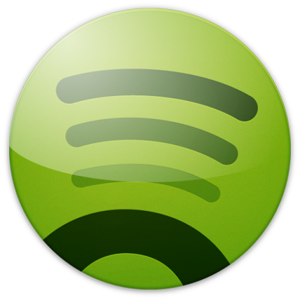Spotify Revenues Grow While Artist Payout Rates Decline?
 Spotify is alive and well, showing steady revenue growth over the past year. However, their per-stream payout rate has steadily declined over the same time period.
Spotify is alive and well, showing steady revenue growth over the past year. However, their per-stream payout rate has steadily declined over the same time period.
Wait…what? As the company’s revenue grows, per-stream payout rates should be increasing along with it, right? Unfortunately, it’s not quite that simple.
As we’ve written before, although Spotify may share 70% of its revenue with copyright holders, that revenue is divided across streams on the service.
This means that if the number of streams grows even faster than revenues do, the amount artists get paid per play can actually fall. And it looks like that is exactly what has been happening lately, according to a new report.
In a new post this week, Daniel Sanchez of Digital Music News revisits a case study of Zoe Keating, an award-winning cellist and composer who has shared her streaming profits from the past 6 years.
In it, Sanchez writes that “in total, after 6 years on Spotify, Keating earned just $34,862.71 after 9,409,799 plays at an average per-stream rate of $0.0037049.”
With an average rate just under $0.004 per stream in Keating’s most recent earnings breakdown, Spotify shows one of the lowest payout rates when compared to similar services the cellist used—and a drop in the per-play rate compared to recent years.
Deezer, for instance, paid her slightly more than Spotify at an average of $0.0048 per stream, while the subscription-only platform, TIDAL, was able to pay her substantially more: $0.0162 per play.
[Editor’s Note: In fairness Spotify’s premium subscription service also shows a higher average payout rate when isolated from its free, ad-supported platform. Though it is not broken out in Sanchez’ article, our last investigation in 2013 showed that Spotify Premium streams were paying closer to $0.009 at that time.]
Meanwhile, Amazon Prime Music has a model that led to payouts closer to $0.0663—several times higher than any of the streaming-only sites. The differences that lead to this huge discrepancy were not covered in the article.
Even though Spotify paid the least per stream of any of the services analyzed, it was also responsible for the greatest number of streams in total—by a huge margin—and so it paid Keating more in total than any of the other competing streaming services.
While an average annualized streaming income of $5,810.45 for Keating from Spotify may seem like a substantial amount of money for the casual musician, for the professional, it’s clear that Spotify isn’t presently a valid primary source of income.
Daniel Sanchez of Digital Music News states that “no matter what the company claims, you shouldn’t expect to make a living off of Spotify. Or even pay next month’s rent.”
According to Sanchez’ report, Spotify’s average per-stream payout rates peaked at $0.0044713 in 2014. This “…marked the last time Spotify’s per-stream rate went that high.”
While still a valid source of secondary income, only time will tell if Spotify makes moves to provide more lucrative per-stream rates for their artists. For this to happen, the company would have to start increasing their sales faster than their listeners increase their number of streams.
Read the full article by Daniel Sanchez that includes Keating’s in-depth Spotify royalty statistics here.
Charles Hoffman is a Mixing and Mastering Engineer at Black Ghost Audio. After graduating from the University of Manitoba with an English degree, Charles completed his education at Icon Collective in Los Angeles, CA.
Please note: When you buy products through links on this page, we may earn an affiliate commission.






